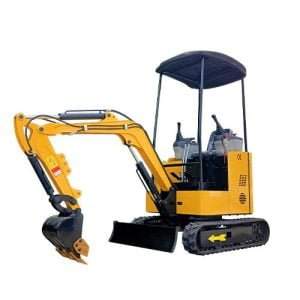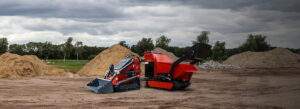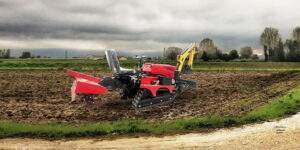Exploring the Benefits of Agriculture Drones in Modern Farming
Introduction
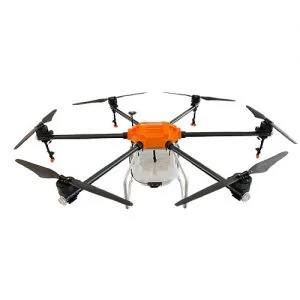
Agriculture, the backbone of civilization, has seen tremendous advancements over the years. One such innovation revolutionizing the industry is agriculture drones. These unmanned aerial vehicles (UAVs) equipped with various sensors and cameras are transforming traditional farming practices. In this blog post, we delve into the myriad benefits agriculture drones bring to modern farming practices.
Precision Farming with Agriculture Drones
Agriculture drones are at the forefront of precision farming, allowing farmers to monitor their crops with unprecedented detail. Equipped with high-resolution cameras and sensors, drones provide valuable data on crop health, moisture levels, and pest infestations. This data enables farmers to make informed decisions regarding irrigation, fertilization, and pest control, optimizing crop yields while minimizing resource usage.
Efficient Crop Monitoring and Management
Gone are the days of manually inspecting vast farmlands. agricultural drones offer efficient crop monitoring and management solutions. By autonomously flying over fields, drones capture real-time imagery and data, enabling farmers to identify areas of concern such as nutrient deficiencies or weed growth. With this timely information, farmers can take proactive measures to address issues before they escalate, leading to healthier crops and increased productivity.
Cost-Effective Pest Control
Pest infestations pose a significant threat to agricultural productivity and profitability. Traditional methods of pest control often involve widespread pesticide application, which can be both costly and environmentally damaging. agricultural drones equipped with thermal imaging and multispectral cameras offer a more targeted and cost-effective solution. By precisely identifying pest hotspots, drones enable farmers to deploy pesticides only where necessary, reducing chemical usage and minimizing adverse environmental impacts.
Enhanced Crop Spraying Techniques
Crop spraying is a critical aspect of modern farming, ensuring proper application of fertilizers, herbicides, and pesticides. Agriculture drones equipped with specialized spraying mechanisms are revolutionizing this process. These drones can navigate terrain with precision, delivering precise amounts of agrochemicals to targeted areas. Compared to traditional ground-based spraying methods, drone-based spraying is faster, more efficient, and minimizes chemical drift, leading to improved crop health and reduced environmental contamination.
Data-Driven Decision Making
In the era of big data, agriculture drones serve as invaluable tools for data-driven decision making. By collecting vast amounts of aerial imagery and sensor data, drones provide farmers with actionable insights into crop health, soil conditions, and environmental factors. Analyzing this data enables farmers to optimize their farming practices, from crop selection and planting strategies to irrigation scheduling and harvesting techniques. Ultimately, data-driven decision making facilitated by agricultural drones leads to improved efficiency, productivity, and sustainability in modern farming.
Applications of Agriculture Drones
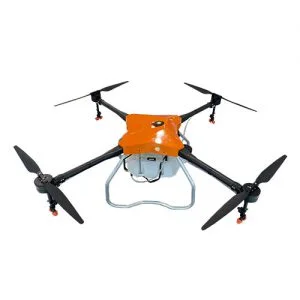
| Application | Description |
|---|---|
| Crop Monitoring | Real-time monitoring of crop health, moisture levels, and pest infestations. |
| Precision Spraying | Precise application of fertilizers, herbicides, and pesticides to targeted areas. |
| Aerial Mapping | Creation of high-resolution aerial maps for field analysis and resource management. |
| Livestock Management | Monitoring livestock behavior, health, and pasture conditions from above. |
| Environmental Monitoring | Assessment of soil erosion, water quality, and land use changes for conservation efforts. |
FAQ
Q: Are agriculture drones suitable for all types of crops?
A:Agriculture drones can be used across a wide range of crops, including grains, fruits, vegetables, and even vineyards. However, the specific application may vary depending on factors such as crop density, terrain, and farm size.
Q: How difficult is it to operate agriculture drones?
A:Modern agriculture drones are designed to be user-friendly, with intuitive controls and automated flight capabilities. While some training may be required, many drones come with software that simplifies flight planning, data collection, and analysis.
Q: What are the regulatory considerations for using agriculture drones?
A:Regulations regarding the operation of agriculture drones vary by country and region. It’s essential for farmers to familiarize themselves with local laws regarding drone registration, flight restrictions, and privacy concerns.
Conclusion
Agriculture drones represent a paradigm shift in modern farming practices, offering unparalleled benefits in terms of precision, efficiency, and sustainability. From precision farming and crop monitoring to pest control and data-driven decision making, drones are transforming every aspect of agriculture. As technology continues to advance and drones become more accessible, their role in shaping the future of farming will only continue to grow. Embracing agriculture drones is not just a choice for farmers; it’s a necessity for ensuring food security and environmental stewardship in the 21st century.

